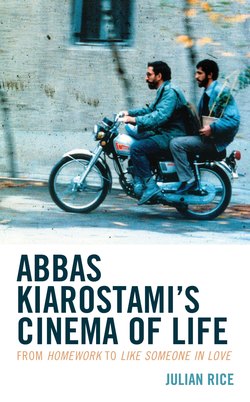Abbas Kiarostami's Cinema of Life

Реклама. ООО «ЛитРес», ИНН: 7719571260.
Оглавление
Julian Rice. Abbas Kiarostami's Cinema of Life
Acknowledgments
The Seeds of War
Notes
Kiarostami and Religion
Notes
Saving the World
Notes
War as Suicide
Notes
Obscuring the Soul
Notes
Prefer the Present
Notes
Save the Children
A Mother Grows Up
Notes
Dream a Little
Notes
The Manly Game
Notes
The Soul of Art
Notes
It’s a Jungle Out There
Notes
Further Reading
Geoff Andrew
Godfrey Cheshire
Jonathan Rosenbaum
Index
About the Author
Отрывок из книги
Chapter 1
At a time when the world is lapsing into varied forms of national fervor and environmental neglect, no artist has more to tell us about the insanity of war and the value of the natural world than the late Iranian filmmaker Abbas Kiarostami. And yet in Sight & Sound’s 2012 poll of the top 250 films of all time, only Close-Up (1990) was included, at number 42.[1] A great deal has been written about Kiarostami since the end of the 1990s, when he was acclaimed as the person of the decade by Film Comment. In its poll of 124 critics, scholars, filmmakers, and distributors, such luminaries as Geoff Andrew, Michel Ciment, Adrian Martin, Laura Mulvey, Bernard Tavernier, and Serge Toubiana put Kiarostami at the top of their list. Robin Wood wrote that Kiarostami’s “subtle, complex, oblique art develops further with every film,”[2] and David Bordwell praised Through the Olive Trees (1994) as “deeply moving” and “formally adventurous,” putting Kiarostami on a par with Eisenstein, Ozu, Dreyer, and Renoir: “[Kiarostami seems] to be reinventing the history of the cinema . . . without any postmodernist bad faith—instead, a spontaneous sense of human integrity.”[3]
.....
24.
Quoted in Jeffries, “Landscapes of the Mind.”
.....